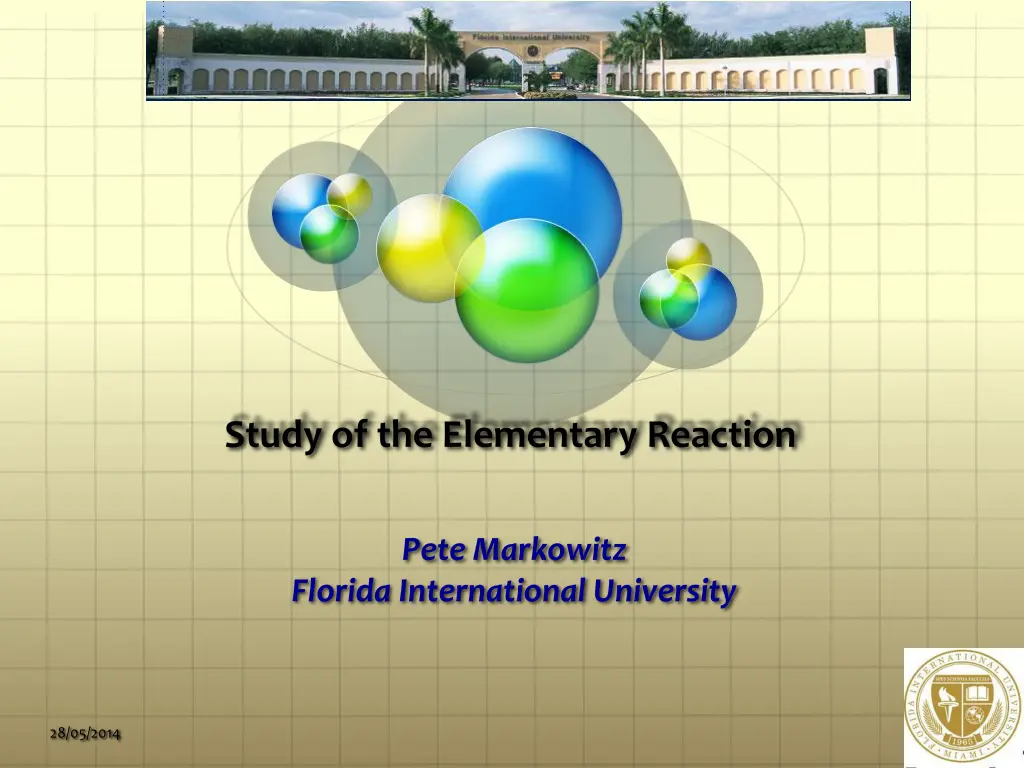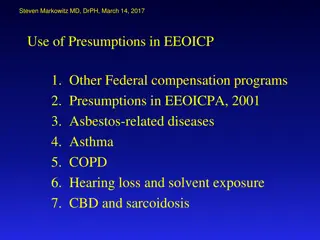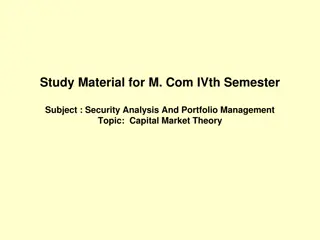
Insights into Hypernuclear Experiments and Elementary Reaction Mechanisms
Explore the latest findings from hypernuclear experiments focusing on elementary reaction processes such as 1H(e,eK) and their implications. Discover the challenges in interpreting angular distributions and transverse estimates, enhancing our understanding of nuclear structure and dynamics.
Download Presentation

Please find below an Image/Link to download the presentation.
The content on the website is provided AS IS for your information and personal use only. It may not be sold, licensed, or shared on other websites without obtaining consent from the author. If you encounter any issues during the download, it is possible that the publisher has removed the file from their server.
You are allowed to download the files provided on this website for personal or commercial use, subject to the condition that they are used lawfully. All files are the property of their respective owners.
The content on the website is provided AS IS for your information and personal use only. It may not be sold, licensed, or shared on other websites without obtaining consent from the author.
E N D
Presentation Transcript
Study of the Elementary Reaction Pete Markowitz Florida International University 28/05/2014
The Program in Halls A & C to date: High Q2at large ( normal ) angles Longitudinal and Transverse Structure Function Separation Utilized standard cryotargets, spectrometers (HRS, HMS, SOS) Required addition of Kaon PID (aerogel counters) Showed sizable longitudinal response Aimed at form factors, reaction mechanism, appropriate degrees of freedom (Regge models, isobar models, To be continued in Hall C at 12 GeV (E12-09-011) 28/05/2014
The Hypernuclear Program to date: Low Q2 at small angles Same kinematics as hypernuclear spectroscopy Elementary reaction is an ingredient of hypernuclear calculation Typically start w/ photoproduction and extend to electroproduction Intrinsically interesting however: dependence at small angles not previously measured W dependence still open Ratio of : 0 could reveal isospin of diquarks Hypernuclear setup Utilized cryogenic, waterfall or CH2 targets Very clean spectra with low backgrounds Luminosity well understood but acceptances take work Precise cross sections obtained Odd piece of phase space Critical for interpreting hypernuclear measurements Almost real photons but Possible to do very limited Q2 (slope?) 28/05/2014
H target The elementary process 1H(e,eK) JLab hypernuclear experiments detect K+at small angles & low Q2 (close to photon-point). Region not covered existing photo- and electroproduction data CLAS, SAPHIR, and LEPS. Lack forward angle data Models differ at very forward angles. Also makes interpretation of obtained hypernuclear spectra difficult. 28/05/2014
Results on H target Angular distribution None of the models is able to describe the data over the entire range E94-107 data is electroproduction could longitudinal amplitudes play a role? 28/05/2014
Results on H target Transverse estimate o Estimate of purely transverse amplitudes o Still greater than most models predict 28/05/2014
{ drops with increasing Q2 0 essentially flat with Q2 0{ 28/05/2014
drops with increasing Q2 0 essentially flat with Q2 slight rise with increasing CM ? 0 essentially flat with CM { drops with increasing Q2 0 essentially flat with Q2 0{ 28/05/2014
slight rise with increasing CM ? 0 essentially flat with CM { drops with increasing Q2 0 essentially flat with Q2 0{ , 0 essentially flat with W, as expected from photoproduction 10/13/09
slight rise with increasing CM ? 0 essentially flat with CM { drops with increasing Q2 0 essentially flat with Q2 0{ , 0 essentially flat with W, as expected from photoproduction 0/ ratio essentially flat with Q2, ~0.5 10/13/09
Results on H target The p(e,eK) Cross Section p(e,e'K+) on Waterfall Production run p(e,e'K+) on LH2Cryo Target Calibration run Expected data from E07-012, Never ran (but we could get similar data) 10/13/09
Proposed Kinematics E 4.5328 GeV Q2 .218 (GeV/c)2 W 1.89 GeV -.113 GeV2 t ( = ) e 7 ( 1.5 H, 2.5 V) 3.0296 GeV ( 4.5%) Pk 1.2 GeV/c ( 12.5%) 16 ( 12.5 ) 28/05/14
Summary Thoughts Low hanging fruit: Important to make sense of hypernuclear data Funny corner of phase space Extremely forward kaon angle Possible W-dependence (~1.7 2.2 GeV)? Minimal amount of beam time (few days total) May not be strong enough motivation to sell the entire program Complementary to other measurements Could use H2O target instead of LH2 What might be unique to Jlab? Energy allows W-scan Independent septa/HKS could allow angular scan 28/05/2014
Not Discussed Existence of hypernuclei: 4 -He (Tamura yesterday) CSB: 4 H (Achenbach & Nakamura yesterday) Sign of spin-spin term: polarized target, polarized beam Lifetimes: 3 H 28/05/2014
Backup Slides 10/13/09






